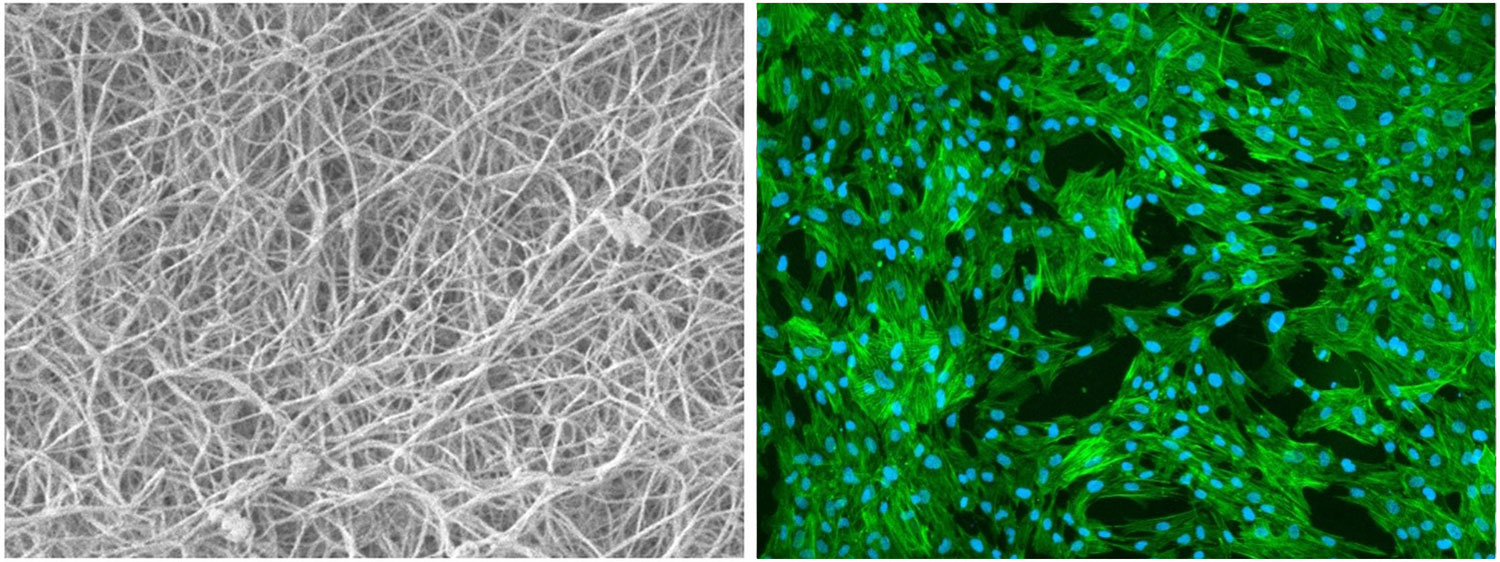Current research projects focus upon three different areas in the tissue engineering realm: 1) corneal repair and regeneration, 2) interface tissue engineering and 3) vascular tissue engineering.
Corneal Repair and Regeneration:
Corneal disease is the second major cause for blindness. Lack of supply of donor corneas has prompted researchers to develop alternative strategies for corneal repair. Recent work in our laboratory has shown that the transparency and stability of electrochemically compacted collagen matrices are on par with that of the native cornea. The long term goal of this project is to develop a fully tissue engineered cornea as a viable alternative to donor corneas by culturing relevant cell populations on a multi-layered collagen scaffold.
Interface Tissue Engineering:
Attachment of soft tissue such as tendon or cartilage to bone is mediated by an interface that comprises of a compositional, structural and mechanical gradient to help minimize stress concentration and facilitate uniform load distribution. Soft tissue injuries, specifically at the interface are highly common and mandate the regeneration of the interfacial gradient to restore the full functionality of the joint. In this project, collagen-bioglass gradient materials that mimic the native composition and mechanical properties of soft tissue-bone interface (enthesis) are developed with a goal to improve host integration and promote functional attachment of soft tissue to bone. These biomimetic gradient materials have potential to be used in a number of soft tissue-bone reconstruction applications such as ACL and rotator cuff tendon.
Vascular Tissue Engineering:
Coronary artery disease due to occlusion causes high mortality worldwide. Transplantation of autologous grafts is the current gold standard; however, lack of suitable donor site and morbidity are major concerns. Our approach centers on the development of a functional tissue engineered vascular graft that mimics the composition, structure and mechanics of the native tissue as a viable alternative for the treatment of diseased arteries. In this project, highly aligned elastin incorporated collagen fibers that mimic the native composition of blood vessels (~50% elastin) are synthesized for the development of a multi-layered three-dimensional scaffold for vascular applications.

